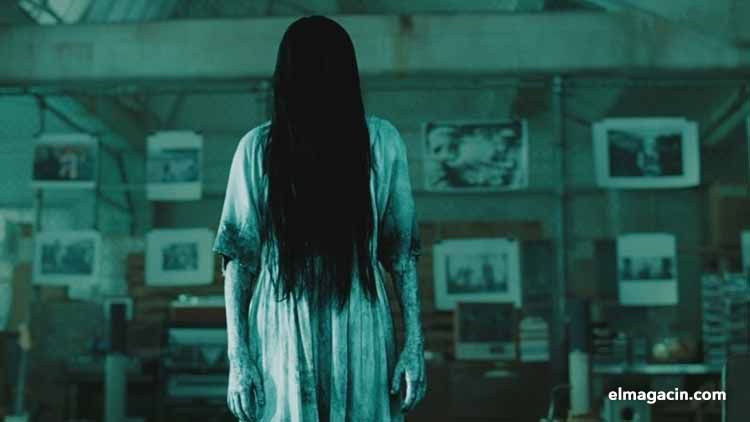The Table page displays a submission's general information and data using tabular layout. Ver vídeo
Información del envío
Número del envío: 1110
ID del envío: 1119
Submission UUID: e1d40642-ab98-4ecc-aedf-ae766a419704
Submission URI: /es/form/wizard-fichatraductologica
Created: Vie, 19/11/2021 - 00:19
Completed: Mié, 24/11/2021 - 01:57
Changed: Sáb, 19/10/2024 - 21:14
Remote IP address: (desconocido)
Enviado por: ARIADNA SANCHEZ MARTINEZ
Idioma: Español
Is draft: No
Página actual: webform_confirmation
Form Ficha Terminológica: Ficha Traductológica
| Término | Japanese horror |
|---|---|
| Idioma | Inglés (Estados Unidos) (214) |
| Área Especialidad | Humanidades y de las Artes (406) |
| Disciplina | Cinematografía (474) |
| Temática | Estilos y corrientes cinematográficas |
| Definición del término | Japanese horror is fiction arising from popular culture in Japan, generally noted for its unique thematic and conventional treatment of the horror genre. Japanese horror tends to focus on psychological horror, tension building (suspense), and supernatural horror, particularly involving ghosts (yūrei) and poltergeists or themes of folk religion. |
| Fuente / Autor (del término) | Wikipedia. (2021). Japanese horror. Retrieved from https://en.wikipedia.org/wiki/Japanese_horror |
| Contexto del término | "Tsukamoto Shinya’s films, Tetsuo: The Iron Man (1988) and Tetsuo II: Body Hammer (1992), mark the beginning of the new wave of Japanese horror cinema. The nightmarish cyberpunk vision of these experimental films can be traced back to the dystopianism, fear of annihilation and threats of invasion of both manga comics and anime; the excess, monstrosity and mutations of the colossal creature films produced by the Toho and Daiei studios; and the perversity, obsessions and sadistic torment of many of the pinku eiga produced by Nikkatsu Studios." |
| Fuente / Autor (del contexto) | Conrich, I. (2005). Metal-morphosis: Post-industrial crisis and the tormented body in the Tetsuo films. In J. McRoy (Ed.), Japanese Horror Cinema (pp. 95–106). Edinburgh University Press. Retrieved from http://www.jstor.org/stable/10.3366/j.ctvxcrghb.16 |
| Equivalente en español | cine de terror japonés |
| Categoría gramatical | Nominal (221) |
| Variante de traducción | horror japonés |
| Información geográfica de la variante en español | México (Mex.) (192) |
| Definición del término en español | Cine surgido en Japón caracterizado por la referencia a los kaijus (monstruos gigantes), así como a lo sobrenatural (fantasmas, demonios) y terror psicológico. |
| Fuente / Autor (del término en español) | Sector_cine. (2017). Características del terror en el cine según su país de origen. Recuperado de https://www-sectorcine-com.translate.goog/noticias/caracteristicas-terror-cine-segun-pais-origen/?_x_tr_sl=es&_x_tr_tl=en&_x_tr_h |
| Contexto del término en español | "Básicamente, el Boom del cine de terror japonés y asiático comenzó con Ringu (El aro Original) , ya que da inicio principalmente el concepto en las películas. Hideo Nakata, director de la película Ringu de 1998 es quien directamente hizo propagación internacional de la maldición de Sadako y del cine de terror japonés. Nadie podía predecir que esta adaptación cinematográfica de la novela de Koji Suzuki sobre la cinta maldita pudiera llegar a alcanzar el éxito y reconocimiento que ha conseguido en todo el mundo." |
| Fuente / Autor (del contexto en español) | Lamas, A. (2014). CINE DE TERROR JAPONÉS. Recuperado de http://jarocholamas.blogspot.com/2014/01/cine-de-terror-japones.html |
| Imagen |

|
| Fuente / Autor imagen | Externa |
| URL de la fuente (imagen) | https://www.elmagacin.com/wp-content/uploads/cine-de-terror-japones-el-magacin.jpg |
| Opciones no recomendadas | j-horror |
| Comentarios | El término j-horror también se usa en español como un préstamo del inglés, sin embargo no recomendamos su uso para traducir el término sino como una explicación añadida. |
